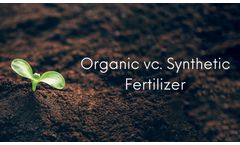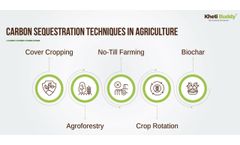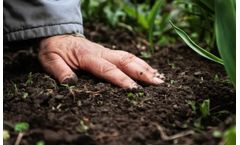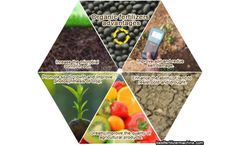Soil Microbial Populations Pathogens And Activity Articles & Analysis
15 articles found
Feeding your plants is a fundamental aspect of nurturing a thriving garden, whether you’re aiming for a bountiful harvest or flourishing blooms. However, the choice of fertilizer significantly impacts the health of your plants and the environment. There are two primary types of fertilizers – organic and synthetic. In this article, we’ll delve into the pros and cons of each, ...
Biochar, a carbon-rich byproduct derived from the thermal decomposition of organic materials, is gaining attention for its environmental and agronomic benefits. Derived from agricultural waste biomass, biochar not only provides a sustainable way to manage waste but also serves as an effective soil amendment, enhancing soil fertility and sequestering carbon. Understanding how biochar is made and ...
While farming activities have traditionally been associated with greenhouse gas emissions, innovative practices can turn agriculture into a significant carbon sink. This transformation hinges on effective carbon sequestration techniques, which capture and store atmospheric carbon dioxide in soils and plants. Implementing these methods is crucial in our fight against climate change. However, the ...
In the ever-evolving landscape of sustainable agricultural practices, biochar emerges as a promising contender, offering a multitude of benefits to poultry farming operations worldwide. Derived from the biomass pyrolysis process, biochar is a carbon-rich substance renowned for its capacity to enhance soil health, improve nutrient retention, and mitigate environmental degradation. Its application ...
Most farmers can agree that although there’s no silver bullet to a bumper crop, healthy soil plays a crucial role, from seeding to harvest and beyond. But how much is understood about what really happens beneath the surface of the field? “Well-functioning soil will retain, provide and recycle nutrients and water, and will support a diverse array of biota in the soil-plant ...
The growth in human population has had an important impact on soil and the services and resources it can provide. The consequences of human activities on soil resources resulted in the loss of biodiversity, accelerated erosion, desertification, compaction, nutrient depletion, and loss of soil organic matter (SOM), which is primarily made up of carbon (58%). Considerable losses of soil carbon ...
They go together like salt and pepper – they’re better together When you have a strong and varied crop rotation, it produces a greater diversity in the soil microbiome, which improves activity both above and below the surface. One of the most critical parts about a healthy crop rotation is bacteria – both good and bad – because when you change crops, you change pathogens. ...
Keratinase is a type of extracellular, inducible proteolytic enzyme that can degrade keratin substrates that are insoluble. This enzyme can hydrolyze hair, feathers, and collagen in the sewage system during wastewater treatment. Additionally, it is useful in the food industry and the manufacturing of livestock feed, etc. Enzymatic hydrolysis of insoluble feather keratin using the keratinase ...
The actual utilization rate of chemical fertilizer in many areas is only 30% - 45%, and even lower in some areas! After applying organic fertilizer, due to its beneficial biological activity, the soil structure was improved, the soil water and fertilizer retention capacity was increased, the loss of nutrients was reduced, and the effective utilization rate of chemical fertilizer was increased to ...
Function of carbon based fertilizer Organic carbon fertilizer based on high-quality humic acid and fulvic acid can promote the formation of soil aggregate structure, reduce soil bulk density, increase cation exchange capacity, and regulate soil pH, thus contributing to improving soil water, fertilizer, heat preservation and ventilation capacity. Carbon based fertilizer processed by fertilizer ...
Soil organic matter (SOM) and microbial activity are key components of soil quality and sustainability. In tropical humid tropics of Costa Rica three pesticide regimes were studied: fungicide (low input); fungicide and herbicide (medium input); and fungicide, herbicide and nematicide (high input), under continuous banana cultivation for 5 (young) or 20 (old) years, in three microhabitats: ...
A field experiment was conducted to study the influence of coffee effluent irrigation on performance of established robusta coffee, nutrient contribution and microbial activities in the soil. The results revealed that the field irrigated with coffee effluent from aerobic tank having COD of 1009 ppm, did not affect the yield of clean coffee (1309 kg ha-1) and it was on par with the plots irrigated ...
Received for publication August 7, 2009. This study evaluated the influence of 20 annual land applications of Class B biosolids on the soil microbial community. The potential benefits and hazards of land application were evaluated by analysis of surface soil samples collected following the 20th land application of biosolids. The study was initiated in 1986 at the University of Arizona Marana ...
ABSTRACT Quality standards have been recently established in France for sewage sludge composts and other urban composts (greenwaste, biowaste and municipal solid waste composts). These standards allow to guarantee the innocuousness of the composts. Other standards have been defined in order to predict the compost effects on soil properties: the index of biological stability (ISB), based on ...
In nutrient impoverished landscapes in southwest Australia, terrestrial litter appears to be important in phosphorus (P) turnover and in the gradual accumulation of P in wetland systems. Little is known about the fate of P leached from litter during the wet season and the associated effects of soil microclimate on microbial activity. The effects of temperature, moisture, and litter leaching on ...












